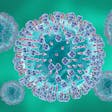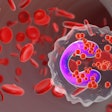
Muscle deconditioning, particularly involving the diaphragm, may be a significant and treatable trait in patients with asthma. According to the new research, “Diaphragm Function in Patients With Asthma and Healthy Controls: A Cross-Sectional Study,” asthma patients exhibit lower diaphragm thickening fractions (TF) compared to healthy individuals, indicating diaphragm dysfunction.
The Italian study, which was published in Respiratory Medicine, found that diaphragm dysfunction affects 62–66% of the right hemidiaphragm and 46–54% of the left hemidiaphragm. Reduced diaphragm TF was associated with longer disease duration and higher exacerbation rates, suggesting a link between diaphragm dysfunction and asthma severity, according to the study. Researchers said there were no significant correlations between diaphragm TF and anthropometric data, asthma treatments, lung function or T-helper type 2 (Th2) biomarkers.
The prospective, observational study compared the diaphragmatic function of 50 asthma patients with 50 healthy controls. Diaphragm contraction was evaluated using tidal breathing thickening fraction (TF), with dysfunction defined as a TF less than 20%. Additional assessments included flow-volume spirometry, impulse oscillometry (IOS), FeNO, blood eosinophil count and the Sniff Inspiratory Nasal Pressure (SNIP) test.
Although peripheral muscle deconditioning is known to affect lung function and exercise tolerance, researchers noted that the role of respiratory muscle dysfunction, particularly the diaphragm, remained understudied.
Because diaphragm dysfunction can worsen asthma, researchers said identifying the treatable trait could lead to the development of targeted therapies in the future, aimed at enhancing diaphragm function and better quality of life for patients. They also noted that more research is needed on this topic.






















